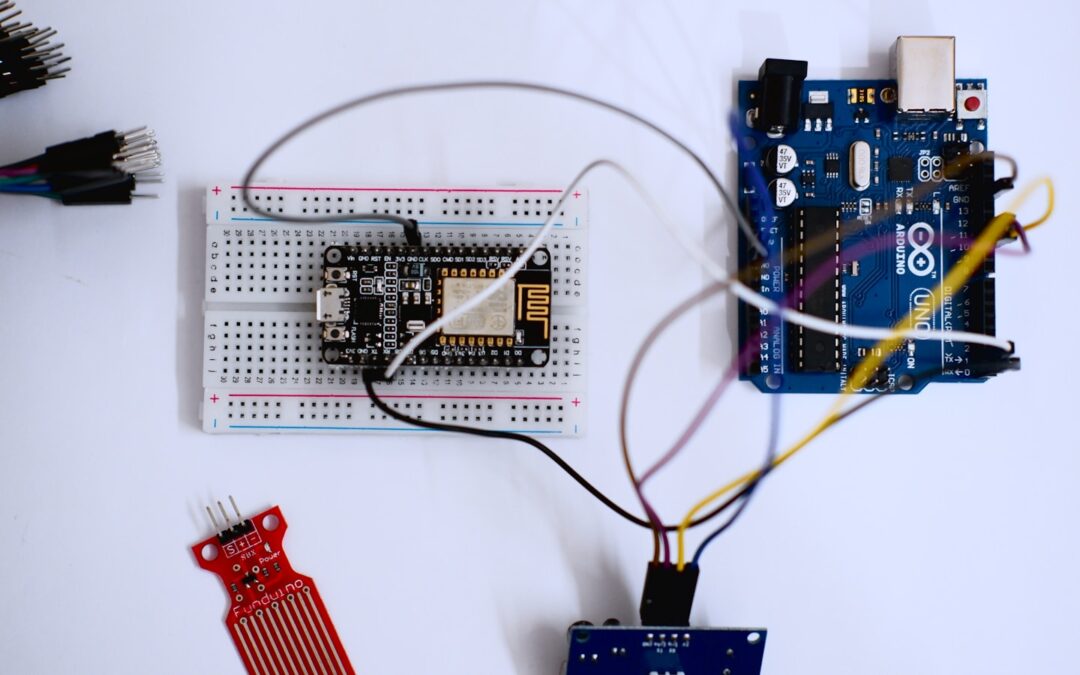The Importance of Encrypting IoT Firmware
Protecting IoT Devices from Tampering
Encrypting IoT firmware is essential in safeguarding devices from tampering, ensuring the integrity and reliability of these connected systems. As IoT devices become more prevalent in smart cities like Riyadh and Dubai, the need for robust security measures is paramount. Firmware, being the core software that runs IoT devices, is a prime target for attackers looking to exploit vulnerabilities. By encrypting firmware, organizations can significantly reduce the risk of unauthorized modifications that could lead to malfunctioning devices or compromised data.
Firmware encryption involves converting the firmware code into a secure, unreadable format that can only be decrypted and executed by the intended device. This process ensures that even if an attacker gains physical access to the device, they cannot easily alter or reverse-engineer the firmware. The use of advanced encryption standards (AES) and public-key infrastructure (PKI) are common techniques in this domain, providing strong cryptographic protection against tampering.
Incorporating encryption at the firmware level is a proactive security measure that aligns with the broader goals of cybersecurity in smart infrastructures. For business executives and mid-level managers in regions like the UAE, understanding and implementing firmware encryption is crucial for maintaining the trust and safety of their IoT deployments. This strategy not only protects the devices but also ensures the overall integrity of the interconnected systems that rely on accurate and secure device operation.
Techniques for Secure Firmware Updates
Ensuring the security of firmware updates is as critical as encrypting the firmware itself. Regular updates are necessary to patch vulnerabilities, add new features, and improve device performance. However, these updates present an opportunity for attackers to inject malicious code if not properly secured. Therefore, adopting techniques for secure firmware updates is vital to protect IoT systems from potential threats.
One effective method is to implement a secure boot process, which ensures that only firmware with a valid digital signature is executed. This technique involves embedding a cryptographic hash of the firmware into the device’s hardware during manufacturing. When the device boots, it checks the integrity of the firmware against this hash. If any discrepancies are found, the device will refuse to boot, preventing the execution of tampered firmware.
Another important technique is the use of over-the-air (OTA) updates with end-to-end encryption. OTA updates allow devices to receive updates remotely, eliminating the need for physical intervention. By encrypting these updates during transmission and ensuring they are signed with a trusted digital certificate, organizations can protect the update process from interception and tampering. This approach is particularly beneficial in large-scale IoT deployments in smart cities, where manual updates would be impractical.
Additionally, implementing a rollback mechanism ensures that devices can revert to a previous, known-good firmware version if an update fails or is found to be compromised. This safety net provides an extra layer of protection, ensuring the device remains operational and secure even in the face of update issues. For entrepreneurs and business leaders, these techniques are crucial in maintaining the reliability and security of their IoT systems.
Best Practices for Encrypting IoT Firmware
Adopting best practices for encrypting IoT firmware and securing updates is essential for creating a robust defense against tampering and cyber threats. One fundamental practice is the use of strong, industry-standard encryption algorithms. Advanced Encryption Standard (AES) with 256-bit keys is widely regarded as secure and efficient for protecting firmware. Additionally, organizations should employ public-key infrastructure (PKI) to manage cryptographic keys and digital certificates, ensuring that only authorized entities can sign and distribute firmware updates.
Regular security audits and vulnerability assessments are also critical. These processes help identify and address potential weaknesses in the firmware and update mechanisms before they can be exploited. By conducting thorough audits, organizations can ensure that their encryption methods remain effective against evolving threats and that their devices are compliant with industry standards and regulations.
Collaboration with trusted security experts and technology partners can further enhance the security of IoT firmware. Engaging with cybersecurity firms that specialize in IoT security provides access to the latest research, tools, and best practices. These partnerships can help organizations stay ahead of emerging threats and implement the most effective security measures.
For business executives and mid-level managers, investing in ongoing training and awareness programs for their teams is also essential. By fostering a culture of security awareness, organizations can ensure that all employees understand the importance of firmware encryption and secure update practices. This holistic approach to security helps create a resilient IoT ecosystem that can withstand potential attacks.
Case Studies: Successful Implementation of IoT Firmware Encryption
Smart City Applications in Dubai
Dubai’s smart city initiatives provide a compelling example of successful IoT firmware encryption implementation. The city has deployed numerous IoT devices across various sectors, including transportation, energy, and public safety. To protect these devices from tampering, Dubai has adopted comprehensive encryption strategies, ensuring that all firmware is encrypted using AES-256 and digitally signed using PKI.
One notable application is the city’s smart grid system, which relies on interconnected sensors and devices to manage energy distribution efficiently. By encrypting the firmware of these devices, Dubai has safeguarded its energy infrastructure from potential cyber-attacks, ensuring a reliable and secure energy supply for its residents. The use of secure OTA updates has also enabled the city to maintain and upgrade its smart grid system without the risk of unauthorized access or tampering.
Healthcare IoT Security in Riyadh
In Riyadh, healthcare facilities have leveraged IoT technologies to improve patient care and operational efficiency. However, the sensitive nature of medical data and the critical functions of medical devices necessitate stringent security measures. To address this, Riyadh’s healthcare providers have implemented robust encryption for all IoT firmware, ensuring that devices operate securely and reliably.
For instance, connected medical devices such as infusion pumps and patient monitoring systems are equipped with encrypted firmware and secure boot processes. These measures protect the devices from unauthorized modifications and ensure that only authenticated updates are applied. By adopting these practices, Riyadh’s healthcare facilities have enhanced the security of their IoT systems, safeguarding patient data and improving overall care quality.
Business Success through IoT Security in Saudi Arabia
Across Saudi Arabia, businesses have recognized the importance of IoT security in achieving long-term success. Companies in sectors such as manufacturing, logistics, and retail have implemented encryption strategies to protect their IoT devices from tampering and cyber threats. These efforts have not only enhanced security but also improved operational efficiency and customer trust.
For example, a leading logistics company in Saudi Arabia has deployed IoT devices to monitor and manage its fleet of vehicles. By encrypting the firmware of these devices and implementing secure update mechanisms, the company has ensured the integrity of its fleet management system. This has resulted in improved route optimization, reduced fuel consumption, and enhanced overall operational efficiency, demonstrating the tangible benefits of robust IoT security.
In conclusion, encrypting IoT firmware and securing firmware updates are critical components of a comprehensive IoT security strategy. By adopting strong encryption techniques, implementing secure update processes, and following best practices, organizations can protect their IoT devices from tampering and cyber threats. Case studies from Dubai, Riyadh, and Saudi Arabia highlight the successful implementation of these strategies, demonstrating their importance in achieving business success and ensuring the reliability of IoT systems.
—
#IoTSecurity #FirmwareEncryption #TamperProtection #SecureFirmwareUpdates #SaudiArabia #UAE #Riyadh #Dubai #ArtificialIntelligence #Blockchain #GenerativeAI #ModernTechnology #BusinessSuccess #LeadershipSkills #ProjectManagement































